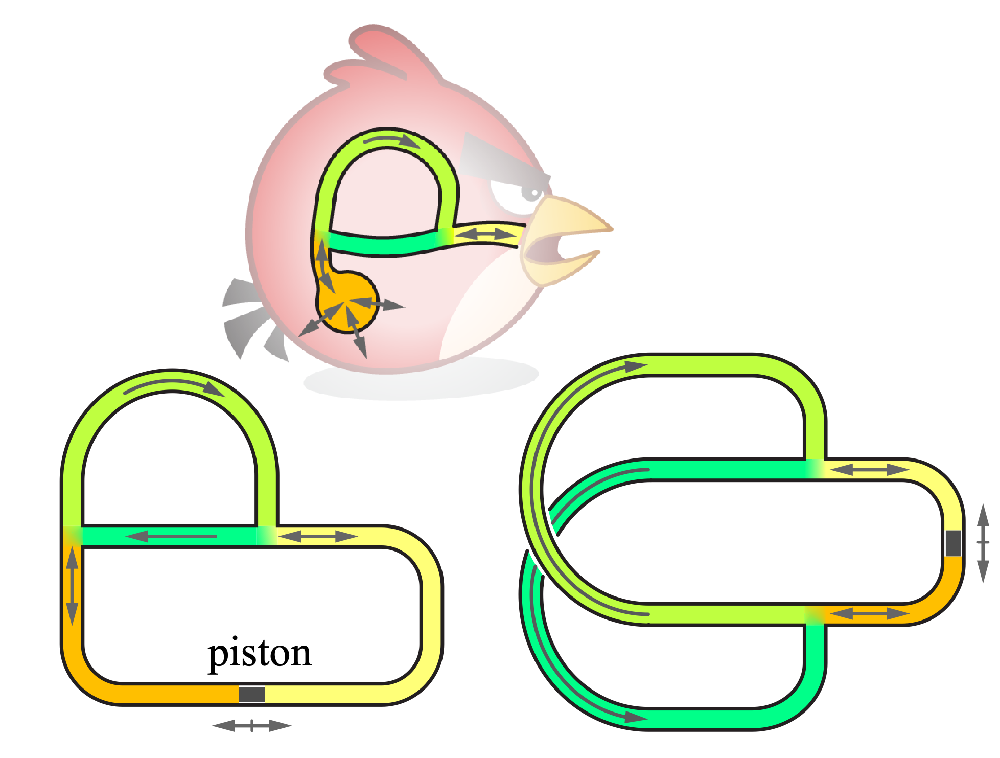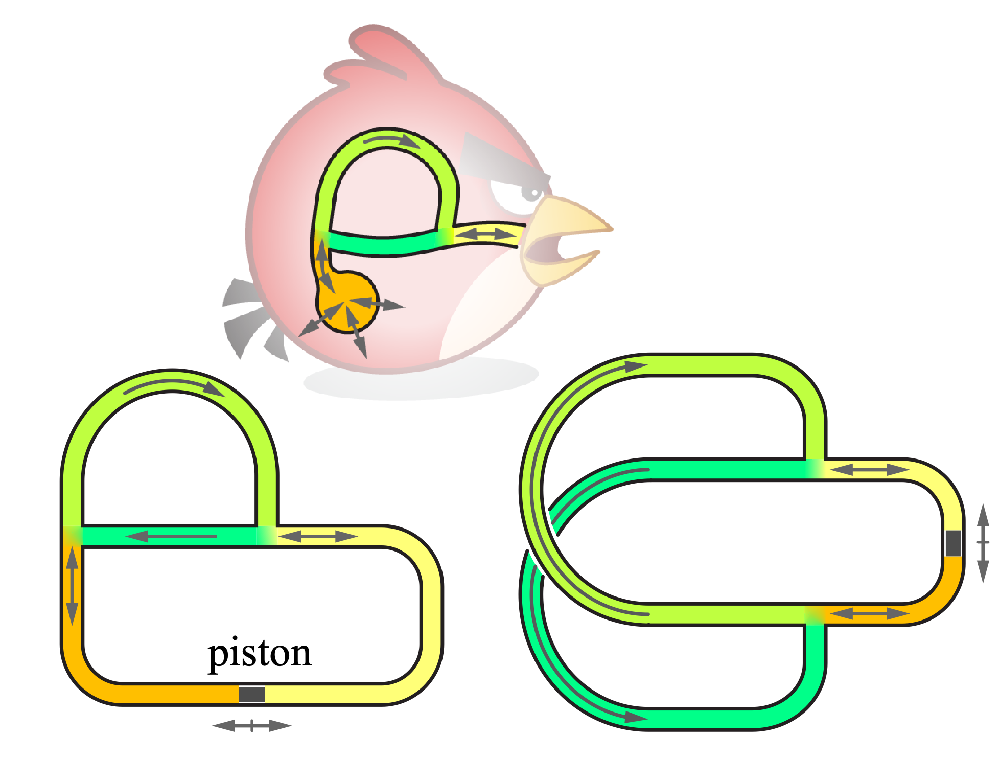Loopy Pipe Network Converts AC to DC
Inspired by structures in a bird’s respiratory system, researchers have demonstrated that an oscillating flow can be transformed into one-way flow by sending it through a properly-connected network of pipes [1]. Elements of the concept were previously proposed by others studying bird lungs, but the new work directly verifies the idea in the lab and includes simulations that explain the underlying principles. The results could lead to new approaches for manipulating high-speed flows within fluid circuits, such as those in chemical processing and machine cooling systems.
A century ago, physiologists made a remarkable observation. While the airflow direction oscillates with inhalation and exhalation in the lungs of most mammals, bird lungs are different—the airflow across the oxygen-absorbing tissues is one-way. Systems that accomplish such flow rectification—transforming an oscillating flow into a unidirectional one—usually rely on components such as diodes or valves that prevent backward flow. Avian lungs lack such components, but researchers have hypothesized that the inertia of air moving through a junction of two pipes can lead to a valve-like effect.
Leif Ristroph of New York University and his colleagues realized that the valve effect can only lead to rectification if the lung’s network of airways has an appropriate structure. The connectivity of this network in birds causes air to flow in complete circuits, which is different from mammalian lungs. But it wasn’t clear exactly what combination of closed loops and junctions would be required to generate rectification, nor how to fully explain the basic mechanism.
To find out, the team built simple pipe networks, starting with a closed loop of rubber tubing. They filled it with water and connected it to a pump that forced the water to flow alternately clockwise and counterclockwise. Next, the team used T junctions to connect a smaller segment of tubing at two locations, but the two T’s were in different orientations, at 90 degrees to one another. This asymmetry was crucial for rectification. With the pump running, rectification occurred in the loop that included the segment and a portion of the original loop. Particles placed in the water oscillated but gradually progressed around this loop by moving farther forward than backward in each cycle. Meanwhile, particles in the remaining portion of the original loop did not progress. “This is, in essence, what happens inside the lungs; now we can actually see and measure what is going on,” says Ristroph.
Using rigid pipes 1.6 cm in diameter, the team built a larger network with a different structure that operated on the same principle. Monitoring microparticles placed in the water allowed the researchers to measure the flow for a wide range of frequencies and amplitudes of the pump oscillation.
Computer simulations of the simpler tube structure revealed an effect that explained the rectification: at each T junction, vortices appear that block the “side street” during one direction of flow but not during the reverse direction. This valve-like effect occurs at the two T junctions at different times during each oscillation cycle.
The rectification effect relies on vortices, which are more prevalent at higher flow speeds—what fluid researchers describe as higher Reynolds number. Ristroph and his colleagues found in their simulations and experiments that the effect was most pronounced at Reynolds numbers above 2000 (fluid velocity of about 10 cm/s for a 1.6-cm-diameter pipe filled with water). But it was still observable for flows with Reynolds numbers as low as 100 (fluid velocity of about 1 cm/s in the same experiments).
“It turns out that for high Reynolds numbers, new physics kicks in that opens exciting opportunities for flow control,” says Ristroph. The effect could be applied, for example, to create a fluid circuit that pumps large volumes of coolant or lubricant in a machine. Vibrations of the machine could provide oscillatory forcing in a loopy network that is tailored to pump the fluid through the system.
“This paper is a fascinating demonstration of how counterintuitive high Reynolds numbers can be,” says Eleni Katifori, of the University of Pennsylvania, who studies structures inspired by biological transport networks. “The work is simple, elegant, and quite original.”
Correction (23 March 2021): In an earlier version of this story, the fluid velocities for the cases of low and high Reynolds number were accidentally switched.
–Rachel Berkowitz
Rachel Berkowitz is a Corresponding Editor for Physics Magazine based in Vancouver, Canada.
References
- Q. M. Nguyen et al., “Flow rectification in loopy network models of bird lungs,” Phys. Rev. Lett. 126, 114501 (2021).





